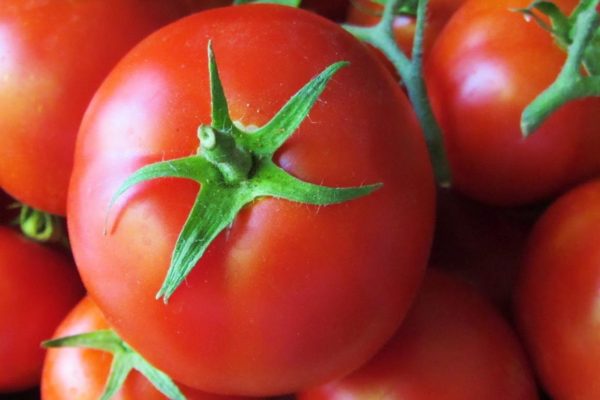
When the summer cottage is small, then you need to save land and use every piece of it. Therefore, many gardeners are interested in vegetables, which with a compact size will give a good harvest. Such fruitful varieties include tomato Jane. It looks attractive, which allows you to decorate dishes with tomatoes. According to reviews, the taste of tomatoes of this variety is very rich.
Content
Characteristics of Jane Variety Tomatoes
The variety of tomatoes Jane refers to mid-season plants. Tomatoes ripen on 110–120 days after emergence. The bush is deterministic, the maximum height reaches 90 cm. Therefore, plants can develop both in the open ground and under film shelter.
Due to the fact that the bush is determinant, most ovaries appear almost simultaneously. This allows you to collect the fruits of this variety earlier than tall tomatoes. At the same time, you can get the whole crop in 1-7 days. The ripening speed of tomatoes depends on how well looked after the plants. Care affects the growth rate, and the frequency of occurrence of ovaries.
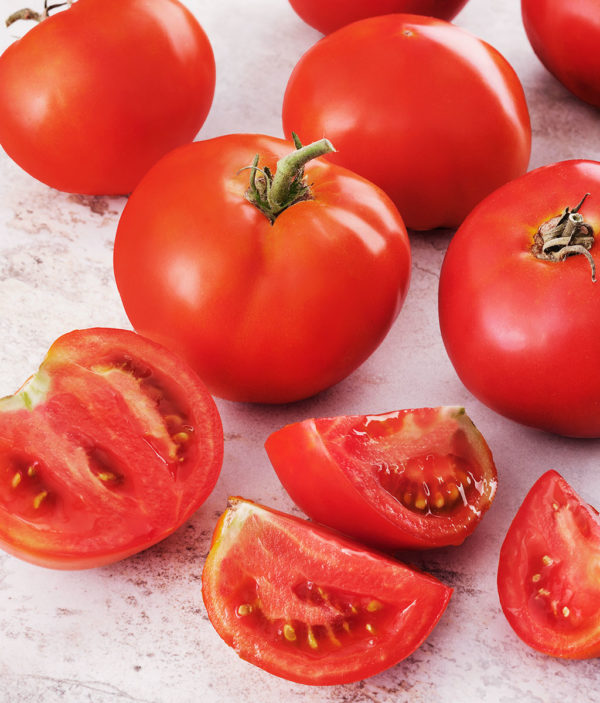
Description of the fruit:
- in shape, the fruits are flat-round, slightly ribbed;
- the color of ripened fruits is uniform bright red, saturated;
- high solids content;
- tomato weight varies from 160 to 200 g.
Due to the dense skin and high solids content, the variety is excellent for making juices and preserving. Tomatoes can be eaten raw for a long time. The fruits retain their shape and taste well. It is only important to store them in a cool and dry place that is protected from direct sunlight.
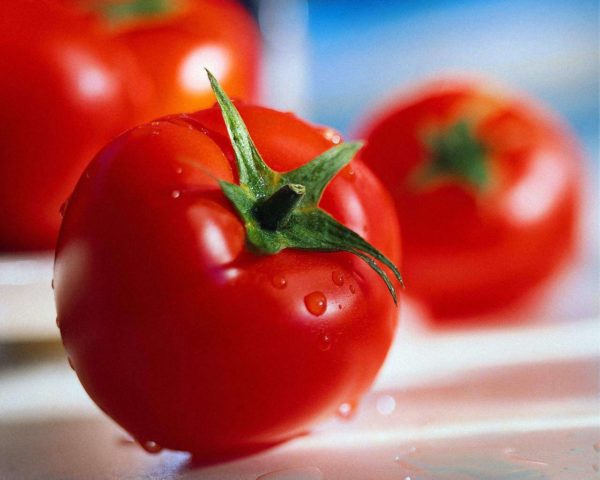
Variety Productivity
With proper agricultural technology 1 plant gives 3.5–4 kg in open ground. If a tomato is planted in a greenhouse, then the number of harvested tomatoes increases to 6 kg. Although the fruits of greenhouses are larger, but their skin is thinner. Because of this, the shelf life of the tomato without processing is reduced. Therefore, this method of cultivation is suitable only if they are planned for their quick sale or conservation.
Jane refers to varieties in which the seeds retain all the hereditary qualities, which is a beneficial difference from hybrid varieties that gradually degenerate. Gardeners need only 1 time to buy successful seeds, and then plant their own.
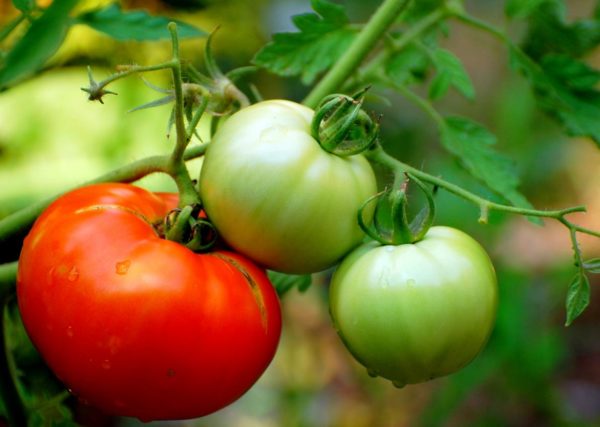
Checking Raw Materials
First you need to check the seeds for hollowness. To do this, you need to mix 60 g of salt in a liter of water. After that, pour seeds into the jar and mix. Those that do not sink to the bottom within 1-2 minutes do not contain a germ. This means that such seeds are defective, and even under the best conditions they are not able to sprout.
Seed for germination:
- From the batch (package), several seeds are randomly selected (10 is best, for measurement accuracy).
- In a flat container with a lid, put a piece of moist cloth, 2 times longer than the diameter of the container.
- Seeds are dipped in a weak solution of manganese to prevent damage by fungus or microorganisms. This allows you to cleanse the seeds of microbes that could get on them at the time of transportation or packaging. This procedure will help to avoid distortion of the results. It is advisable to soak for 3-5 minutes, after which the seeds are removed and washed with cool boiled water.
- They are laid on a rag, and covered with a free edge. After that, the container is tightly closed, so that it retains the maximum amount of moisture, but the air is not stale.
- Containers with wrapped seeds should be put in a warm place, but it is important that it is not too hot. The optimum temperature is from +24 to +28 degrees. Therefore, if you plan to put it near the battery, it is best to place it under the radiator, after having previously shielded it from the floor with a piece of wood.
- It is necessary to constantly monitor the humidity of the fabric, avoiding too much concentration of moisture, or drying out.
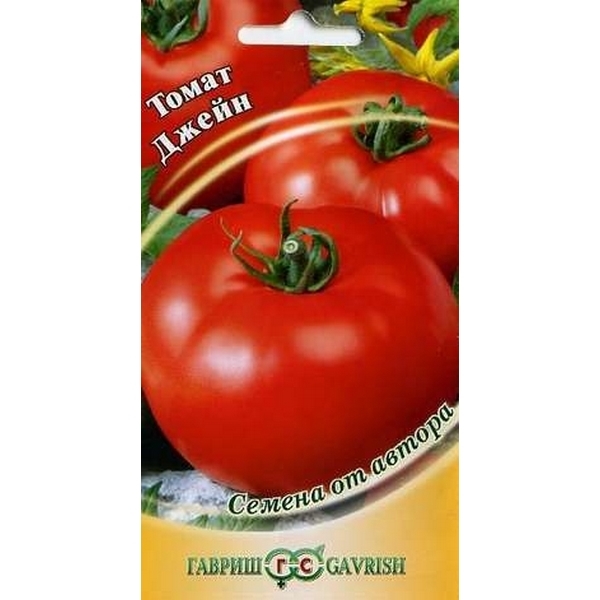
Growing technique
Deterministic varieties were developed for regions with a short summer, which at the end of the season becomes quite cool. Therefore, in such plants, most often an early, or mid-season harvest. And in order to increase the amount of insolation during the period of ovary and fetal development, the seedling method should be used. Then the peak of plant development will occur in the warmest and most lighted months.
Seedlings for open ground are laid in the last decade of March - the first week of April. For greenhouses, you should calculate the time, depending on the night temperature under the shelter. Lay the seeds, 50-60 days before the onset of optimal conditions.
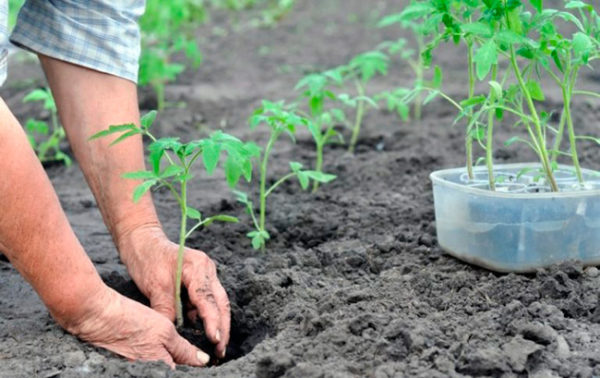
Seedlings in indoor conditions tend to grow green mass, because of which it begins to grow rapidly upward, without strengthening the stem. It is necessary to stop this process so that the plant develops evenly. For this, after the appearance of the first true leaf, a dive is carried out (removal of the upper part of the stem).
Before planting seedlings in open ground or a greenhouse, it needs to be prepared. For this, hardening is carried out for 7-14 days, taking out the boxes to fresh air or a balcony. Gradually, the duration of the procedure increases from 1 hour to 7-8 per day. This will allow the plants to prepare and strengthen the vegetative organs.
For transplanting seedlings, it is required to prepare the wells, in increments of 40-50 cm in all directions. After that, humus or other organic fertilizer is placed in the pits, and the root system, carefully removed from the glasses, is inserted. Subsequently, the plants are fertilized during the period of abundant flowering. And if the earth is scarce on trace elements, then every 35–40 days.
Too many brushes with ovaries form on the bush, which with rather heavy fruits exerts an increased load on the stem. Therefore, the plant is required not only to be abundantly watered, but also tied up. In this case, it is desirable to use both the support of the stem and individual brushes.
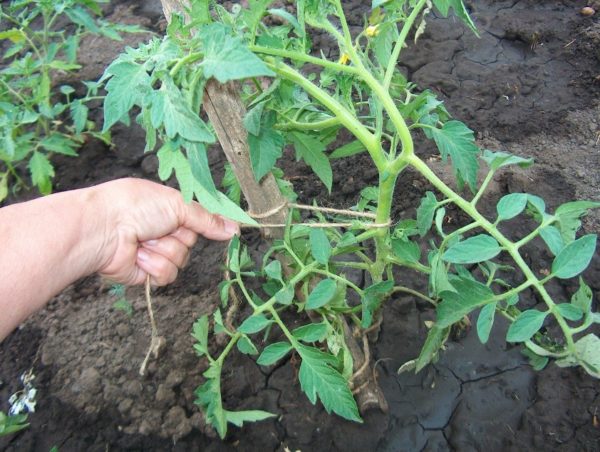
Reviews gardeners
Lilia Alexandrovna, 54 years old. Voronezh region:
“Beautiful and tasty tomatoes look very beautiful in a salad, while the slices do not lose their shape. The husband and son eat them very quickly, barely set aside a few kilograms for preservation. The banks look wonderful, so you have to hide them. Next time, I’ll plant twice as many bushes so that I’ll have enough for food and twists. ”
Artem, 31 years old. Kaluga:
“I have been cultivating this variety for 3 years, although it bears fruiting crowded, because of its good keeping quality, it can be managed to be processed or sold. The fruits are attractive in appearance, and the yield from one bush is quite large. I’m thinking of organizing a small production, there is good land. ”
Elizaveta Andreevna, 65 years old. Ukraine, Odessa region:
“But I didn’t get along with this variety; I planted it for two years - and everything went by. The first time I did not have time to tie it up, so many ovaries broke off, in the second frost hit 2 weeks after planting seedlings. I'll try again, it may come out to get a big crop. Tomatoes are tasty and beautiful, but require timely care. ”
Yuri Vladimirovich, 61 years old. Rostov region:
“Jane produces beautiful tomatoes with a rich taste, which is quite rare in tomatoes that can withstand a cool climate. Due to its rather modest size and plentiful harvest, this variety is grown not only by me, but also by my neighbors. ”




 Low-growing tomatoes, without pinching: 5 of the most delicious varieties
Low-growing tomatoes, without pinching: 5 of the most delicious varieties Why tomato seedlings grow poorly
Why tomato seedlings grow poorly We grow a tomato in a shell
We grow a tomato in a shell Growing tomatoes without watering according to the method of Kazarin
Growing tomatoes without watering according to the method of Kazarin